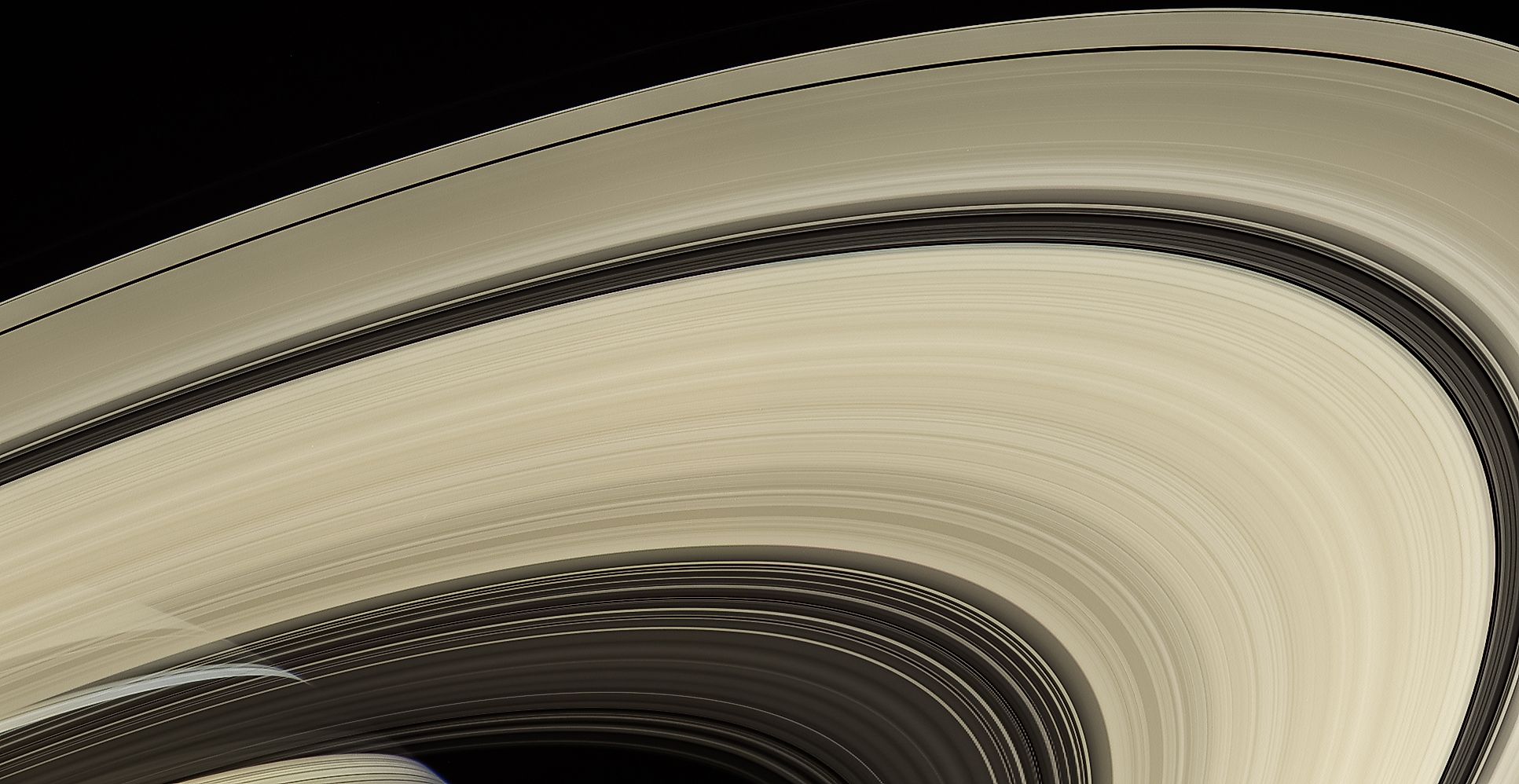
Are Saturn’s Rings Solid?
Saturn’s rings are one of the many wonders of our solar system. They are perhaps the most recognizable feature of Saturn. Ask anyone something they know about Saturn, and most will likely answer that it has rings. Saturn’s rings can be discerned with even a small telescope, and so it comes as little surprise that their existence has been known for centuries. However, astronomers debated for centuries whether or not Saturn’s rings were solid or not. Are Saturn’s rings solid?
Discovery of Saturn’s Rings
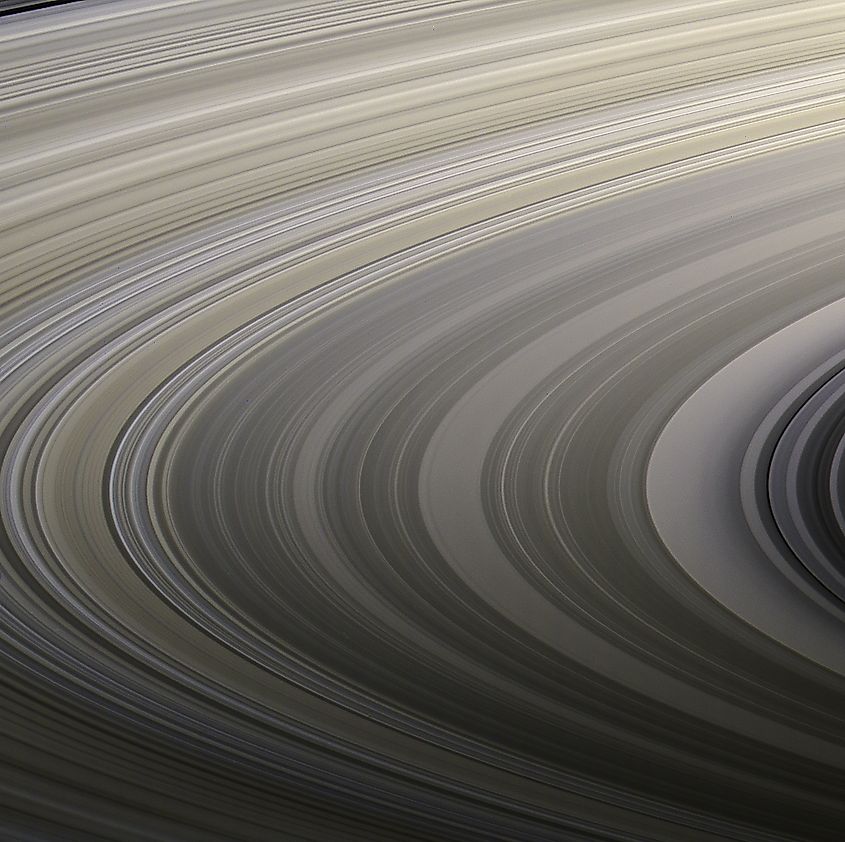
Galileo Galilei was the first to observe Saturn’s rings in 1610, yet his telescope was not quite powerful enough to fully discern them, and so Galileo failed to identify them as rings. Rather, Galileo believed he had discovered two moons on either side of Saturn. As the years went on, telescopes became more powerful. In 1655, the astronomer Christiaan Huygens became the first to correctly identify the structure around Saturn as a ring. Huygens believed the ring was a single, solid structure. Then, in 1675, astronomer Giovanni Cassini discovered the first evidence that the ring around Saturn was actually composed of multiple rings, along with gaps separating some of them. This suggested that the rings were not entirely solid, yet astronomers still widely believed that the different rings were still solid structures. Over a hundred years after Cassini’s discovery, in 1787, Pierre-Simon Laplace showed mathematically that a solid ring around Saturn simply could not exist. Laplace realized that a solid ring would quickly be broken apart by Saturn’s gravity. The inner sections of the ring are closer to Saturn and are thus pulled on more intensely by Saturn’s gravity, while the outer sections would experience less gravity. This difference in gravity would create a tremendous amount of tension that would quickly break the rings apart if they were solid. However, rather than being solid, astronomers then proposed that the rings were fluid. However, in 1859, physicist James Clerk Maxwell showed that even a non-solid fluid ring would break apart under Saturn’s gravity, and so he proposed that the rings were actually composed of countless particles of rock and ice, all trapped in orbit around Saturn. In the late 1800s, studies that analyzed the spectra of Saturn’s rings revealed that Maxwell’s theory was most likely correct.
Visiting Saturn
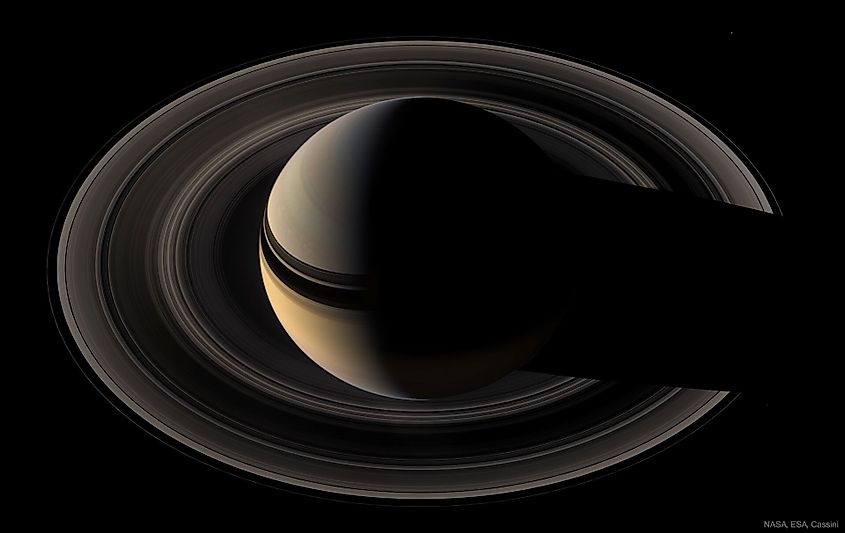
While Maxwell had proposed that Saturn’s rings were composed of countless rock and ice particles, his theory would not be fully proven until the first spacecraft arrived at Saturn and studied the rings in unprecedented detail. The first spacecraft to ever visit Saturn was Pioneer 11 in 1979. Pioneer 11 offered scientists their first ever up-close images of Saturn and its rings, revealing that the rings were in fact composed of countless particles that ranged from the size of a sand grain to a house. Then in 1980 and 1981, the Voyager 1 and Voyager 2 spacecrafts completed their flybys of Saturn, offering even higher resolution images of Saturn and its rings. Today, most of what is known about Saturn’s rings has come from the Cassini spacecraft. Rather than just completing a brief flyby of Saturn, Cassini orbited the ringed planet from 2004 to 2017, offering the world the highest resolution images of Saturn, its rings, and its moons.
Composition of Saturn’s Rings
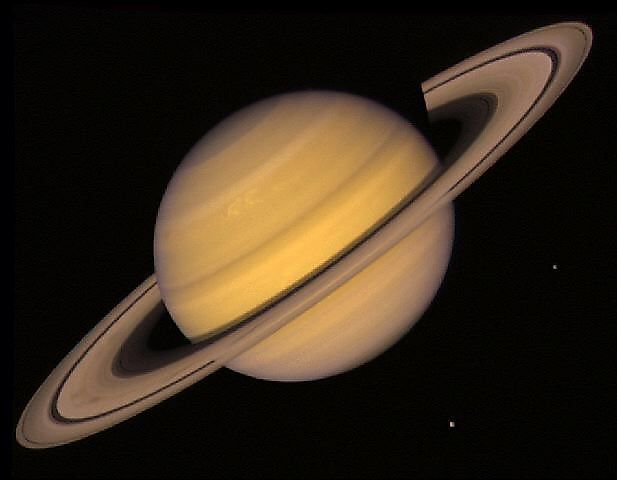
Saturn’s rings are composed of countless particles of ice and rock. Ice makes up the vast majority of the composition, with around 99% of the rings being composed of ice. The remaining 1% is rock and dust. Interestingly, the fact that Saturn’s rings are composed of ice is the reason why they appear so brilliant. The ice particles reflect most of the sunlight that hits them, reflecting them back into space and allowing us to view them in vivid detail.
Formation and Age
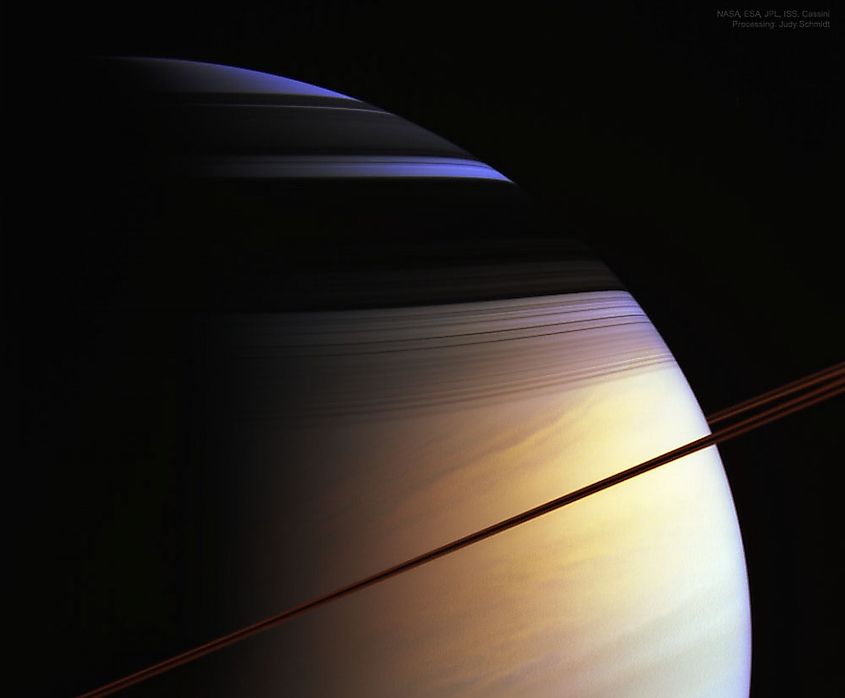
While we generally think of Saturn as being the only planet with rings, all the other gas giants actually have ring systems. Jupiter, Uranus, and Neptune all have rings, it’s just that none of them are nearly as large or bright as Saturn’s. However, the presence of ring systems around each of the gas giants suggests that rings are a natural part of gas giant evolution, and astronomers believe that most gas giants will have a ring system at some point in their lives. Interestingly, all the other gas giants likely had ring systems comparable to Saturn’s in the past, yet over time, they have broken apart and eroded away. The reason why Saturn’s appear so brilliant in comparison to the other gas giants is that Saturn’s rings are probably quite young relative to Saturn’s age. While Saturn formed 4.5-billion years ago, the rings are believed to be no younger than 10-million years and no older than 100-million years. They likely formed as a result of moons, comets, and asteroids moving too close to Saturn, with Saturn’s gravity ripping the objects apart and their material eventually falling into orbit and forming a system of concentric rings around Saturn.











